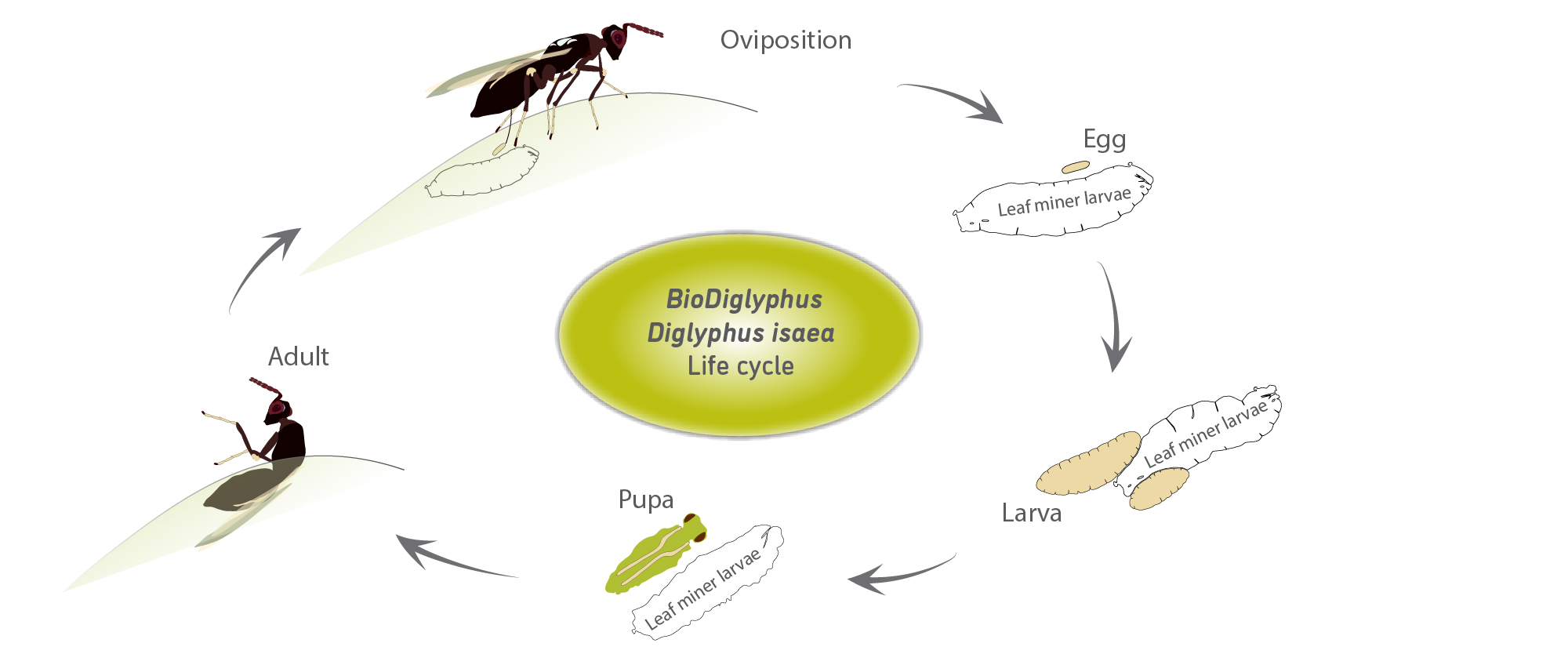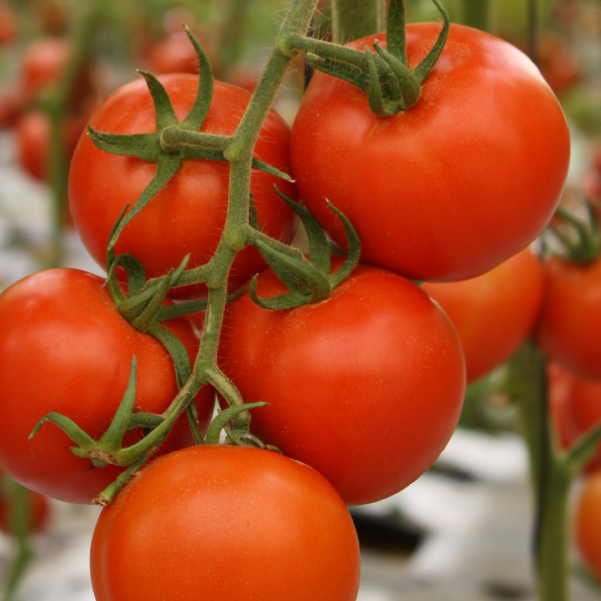BioDiglyphus (Diglyphus isaea) is an ectoparasitic wasp that parasitizes leaf miner larvae in field and greenhouse crops.
BioDiglyphus is a small black wasp (2mm long) with a metallic green sheen. Females lay their eggs in the vicinity of the host (second and third instar leaf miner larvae), the larvae that hatch from the eggs feed on the host, pupate within the empty tunnel of the host, eventually emerging from the upper epidermis as fully grown adults.
Leaf-mining flies in the genus Liriomyza (Diptera: Agromyzidae) are the most important hosts of Diglyphus isaea. It attacks several species of leafminers, including Liriomyza trifolii, L. bryoniae, L. huidobrensis, L. cicerina, L. congesta, L. pusilla, L. pusio, L. sativae and L. strigata.
Consult your local BioBee representative for additional details.
Target Pests
Application
- BioDiglyphus is shipped in insulated, chilled boxes. Packaging must be kept intact until placed in the field.
- Release the wasps in the early morning or late afternoon, when the temperature is milder.
- Remove the product containers from the box, one at a time and empty their content as quickly as possible.
- The wasps are released by opening the lid and sprinkling the contents of the bottle on the leaves of the host plants, preferably in a shady area.
- BioDiglyphus may also be released by drones.
- Do not place BioDiglyphus in the freezer or in temperatures below 0 degrees celcius.
- Do not expose the bottles to direct sunlight.
![]() BioDiglyphus chemical list BioBee 2024
BioDiglyphus chemical list BioBee 2024
Before combining BioDiglyphus with any chemical pesticide in the crop, please consult your BioBee technical field representative.
Crops
Storage
-

Storage temperature
-

Do not store in sunlight
-

Apply early morning or late afternoon
-

Do not freeze
Disclaimer
BioBee Sde Eliyahu Ltd. produces and markets biological products. Production is carried out using innovative techniques under controlled quality assurance standards such as ISO 9001:2015, as well as IOBC’s international standards for mass-production of insects. All products are tested to meet specification requirements before leaving the factory.
The success of biological pest control is affected by the crop’s initial pest population (upon application of the product), weather conditions and chemical residue present in the crop, among other possible aggravating factors.
Under no circumstance shall BioBee be liable for the outcome of the implementation in the field, as it has no control over local conditions, the application method, or the possible improper treatment/storage of the product.












